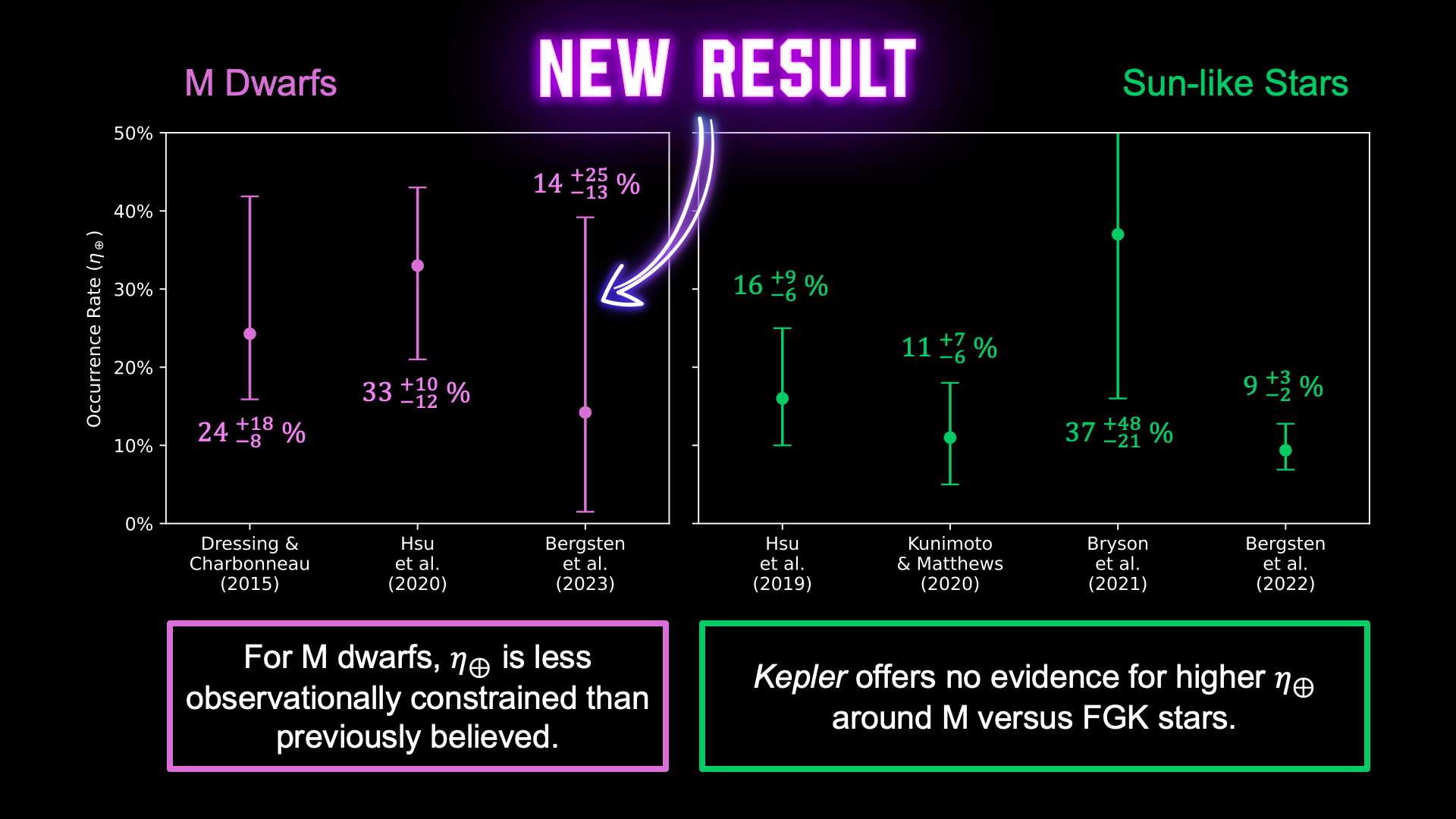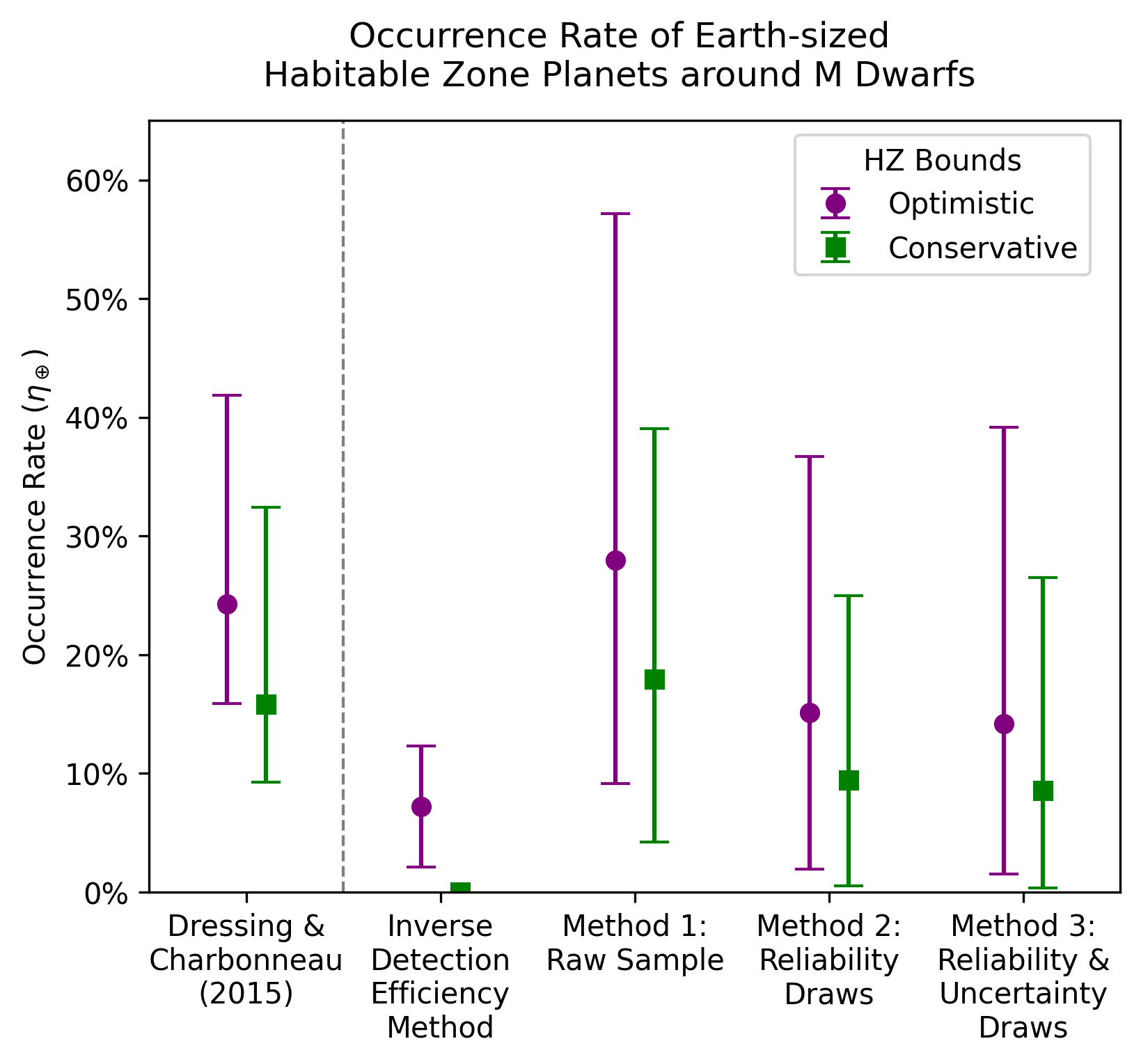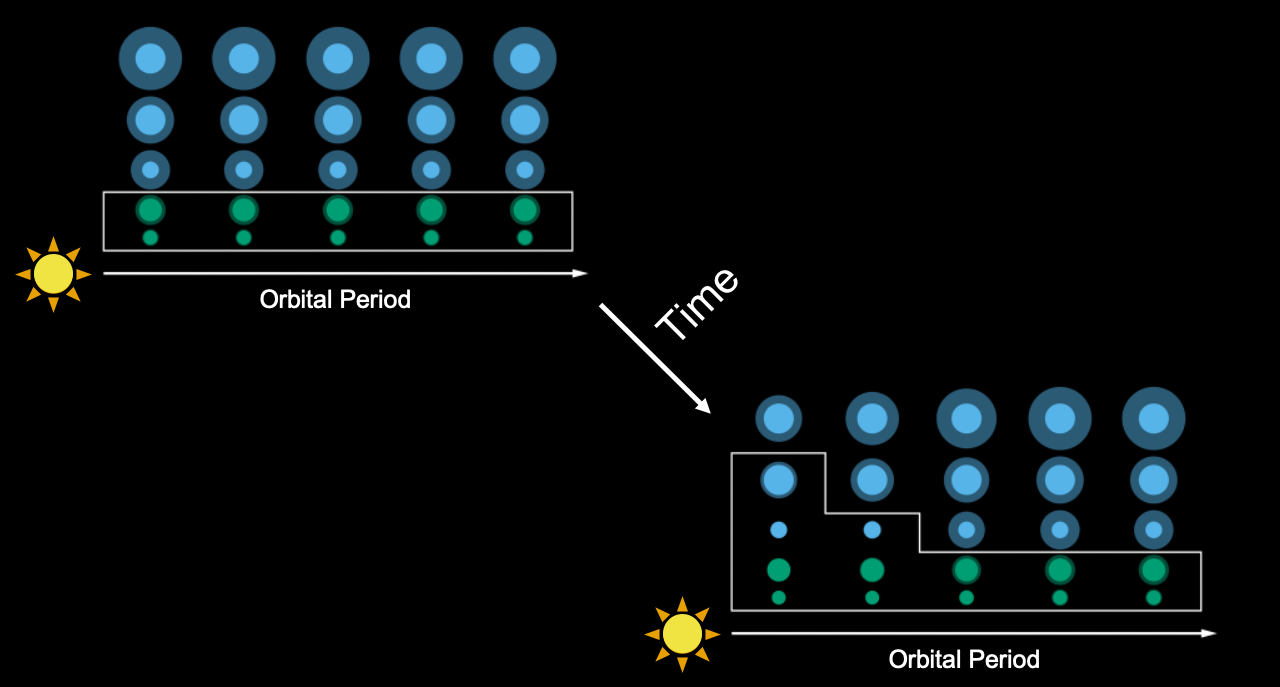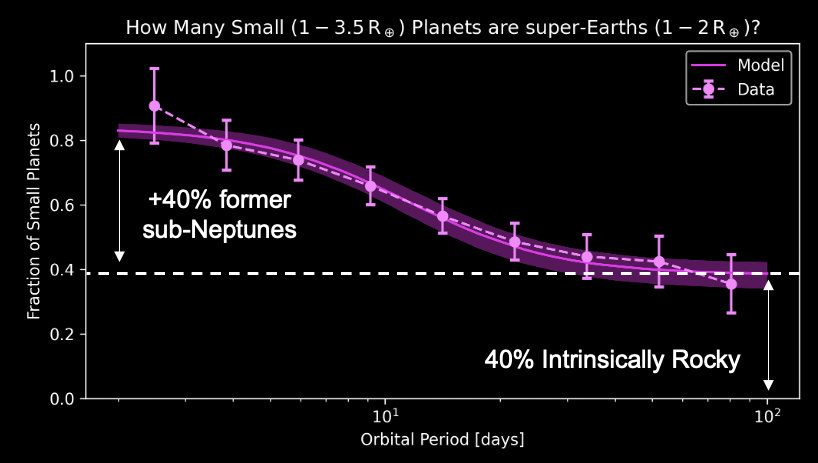Occurrence of Earth Analogues


Earth-sized habitable zone planets are hard to find, which makes it difficult to estimate how common planets like our own might be. We can predict the frequency of Earth-like planets using population models fit to Kepler data, incorporating per-star sensitivity metrics, per-candidate reliability, and considerations of physical processes like atmospheric evolution. For Sun-like stars, we estimate an occurrence rate of \(\eta_\oplus = 9^{+3}_{-2}\%\), or one in ten stars like our Sun hosting a planet like our own.

The picture is less clear for Earth analogues orbiting M dwarfs (or stars between one-half and one-tenth of a Solar mass). Kepler did not originally target many M dwarfs, and Gaia-informed revisions of stellar properties reduced the current sample even further. As a result, our updated occurrence estimate of \(\eta_\oplus = 9^{+18}_{-8}\%\) (or \(14^{+25}_{-13}\%\) in an optimistic case) for M dwarfs is highly uncertain. Thus, the Kepler sample does not offer evidence that M dwarfs should have more Earth-sized planets in their habitable zones (compared to Sun-like stars). Other surveys like TESS and K2 are well-suited to provide additional insight on this topic!


